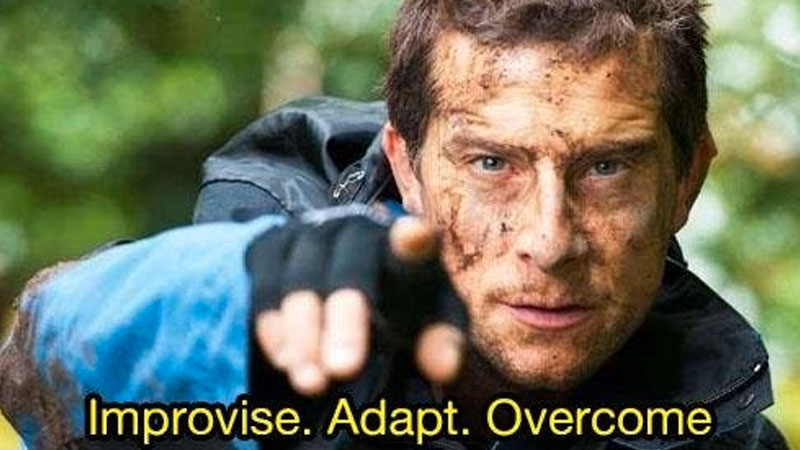Because of the Coronavirus, schools across the world are sending students and teachers home and moving towards online learning. Parents and students are being assured that the learning will continue, that we have a plan for that. So… what is online learning during a pandemic? and what isn’t it?
Note: This blog post is a response to a twitter thread from yesterday click below to read the full tweets and responses.
What it isn’t: Business as usual
There are those that naively believe that they will continue to cover the same amount of content. That students will be just as motivated to learn in their own home as they are at school. That nobody will be too sick to attend classes or to teach them. That teachers will be available through normal school hours.
If my school closes, my 3 year old and my 18 month old will be at home with me. My partner, a lawyer, will be working from home at the kitchen table. I am only 1 of 100 teachers at my school. Each of them will have different home situations. Some will be sick.
What it is: An emergency measure
These are extraordinary times we are living in. This is not something that schools are choosing to do because it might be fun or because the learning will be better as a result. This is something we are doing because there is no other choice.
What it isn’t: Synchronous
My twitter feed is full of teachers who have tested out Zoom or Skype or Microsoft Teams meetings and believe they are ready to roll. They’ll simply keep the same timetable as usual rolling. At 9am, students will all sit at their desk at home, logon, and period 1 will commence. And then this.
Do you really think everybody’s home life will allow this kind of schedule to be followed?
Are you confident that all your students have internet at home good enough to handle video meetings?
Have you load-tested video meetings when Australia is under lockdown, and half the country is working from home? (and the other half is watching Netflix)
What it is: Asynchronous and Self-paced
What this calls for is flexibility. Teachers need to be allowed to create resources when their schedule suits. Students need to be allowed to engage with the learning when they are able to.
When teachers are sick, when their children are sick, they need to be able to log-off for a few days.
When students are sick, they need to feel like they can easily pick up where they left off. They don’t need to have the stress of “missing lessons” and needing to catch up.
What it isn’t: Time to Rethink Your Pedagogy
I have seen many experts on online learning declaring what works and what doesn’t work. They are coming forward with the best practices. They are helpfully telling us that “remote learning isn’t the same as face to face learning” and that we need to “look at the research”.
But school might be open today, closed tomorrow. We are going to need this done fast. Now is not the time to reinvent any wheels.
What it is: Time to adapt your pedagogy
You already have so many resources at your disposal. This is the time to ask yourself the following: “Given the resources I have, how can I quickly adapt to deliver this learning online?”
Maybe you already use OneNote, or Google Classroom, or SeeSaw, or a hundred other LMS’s. Don’t let anyone tell you that you need to start from scratch.

What it isn’t: Time to work harder than ever before
No. You are not working around the clock during a global health crisis. No.
What it is: Time to be kind
Be kind to others. Be kind to your family. Be kind to yourself.
Thank you so much for this information. I have been feeling a bit panicked about how I will deliver the supported lessons that I provide to students with a disability, within their classroom and in small settings. This has helped me feel a lot calmed about doing my best to provide what I need to provide without worrying it is not enough.